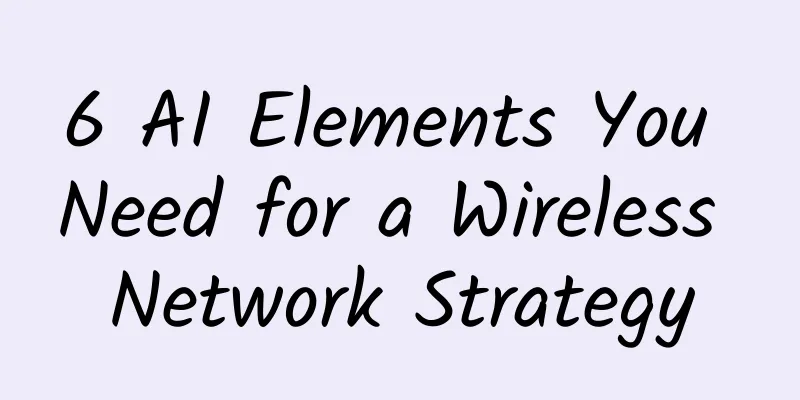Do you really understand the network layer model?

|
I went for interviews throughout the summer and interviewed with many companies (both small and large). The questions asked were of different depths. Network principles are the most easily asked question in interviews. Although we rarely practice it in projects, understanding its principles will help us understand how network communications work. This can not only demonstrate to the interviewer whether you have a solid foundation, but also provide a better understanding of future in-depth studies on the network. Many students will memorize this part when preparing for the interview. This part is indeed difficult to master. I personally summarize the best way to learn network principles is not to memorize deliberately but to fully combine the actual practice to understand the whole principle. Although it is very difficult to learn at the beginning, but if you pay a little attention, read it several times, ask yourself why more often, and regard yourself as a developer who develops network principles, it is enough to sort out the logic before the interview instead of memorizing this part. Moreover, the interviewer has many different ways of asking questions about the same knowledge points, but many of them are just the same old story. I remember the most common question was what happened from inputting a URL to displaying the page? Behind this interview question, there is a lot of knowledge about network principles. We will not share all of them in this article, but first clarify the origin and network layer division to complete the purpose of this article. 1. Why do we need to divide the network into layers? I am not unfamiliar with the network layer division. When I first came into contact with the network layer, I was confused. There are so many layers, wouldn’t one layer be enough? There are many protocols between layers, and various data packets. I gave up the first time. When I picked up the network hierarchy again, I was determined to understand it from the root. First of all, to understand its principle, we must know its origin, that is, why do we need to divide the network hierarchy? This is a good question. If "Xiaolu" is a network developer, he initially thought that only one wire was needed for computers to communicate with each other. That's right, but the world is so big, there are so many computers, and the distance is so far. Not only would it waste wires, but you would also secretly cut the wires. Of course, computers would not be able to communicate with each other. (Later, wireless networks came out. Although the gateways and routers also need to be connected, it is not necessary for each computer to connect to each other, but for computers to connect to each other in a region.) No, the boss said, "Xiao Lu, you must find a way to change it. You can't sleep tonight if you can't change it." "Xiao Lu" thought about it carefully. This is still a technical job and needs comprehensive improvement. He also found that the so-called connection between computers can only transmit 0 and 1 signals. The other computer does not know what so many 0 and 1 represent. Moreover, "Xiao Lu" found that it is very troublesome for computers produced by different manufacturers to communicate with each other through connections. So he might as well define a set of rules. No matter whether it is a "Mou Shuo" computer or a "Mou Xiang" computer, it must abide by this set of rules. In fact, this set of rules is what we often call "network protocol." Didn't we talk about the origin of network layers? How come we are talking about network protocols? Let's continue. Through the above questions, the problem of transmitting 0 and 1 signals between computers through the connection has stipulated the communication rules, but in addition to meaningless signals like 0 and 1, there are various other problems in the network. How do two computers identify each other? How can we know the address of each other? How do different computer applications know the data to be transmitted to themselves? How to stipulate different communication data formats, etc., a series of problems have come up. "Little Deer" discovered that if various issues were written into a set of protocols to stipulate the rules for communication between the two parties, what would happen? What if problems occurred in the communication of any of the rules, affecting other rules? The most common one is data packets. If a data packet contains various protocols, wouldn't it be a mess? 2. How is network layering performed? Now that we have decided to divide it into layers, how many layers should we divide it into? Initially, the network layering was the standard seven layers, which is what we call the OSI seven-layer model. The reference model is a standard system developed by the International Organization for Standardization (ISO) for interconnection between computer or communication systems, generally known as the OSI reference model or the seven-layer model. We also know about the TCP/IP four-layer model and the TCP/IP five-layer model. How did they come about? In fact, the so-called TCP/IP four-layer model and the TCP/IP five-layer model are optimized from the OSI seven-layer model, merging some layers. In fact, they are essentially the same, but I personally like to use the five-layer model to explain it. 3. What is the function of each layer? This part involves many protocols and knowledge points of each layer, but we will not share them in detail in this section. Why? Before we go deeper, we must have a specific network layered structure diagram in our mind. We must first know what each layer does and the relationship between layers. Then, in the next section, we will go into detail about how each protocol in each layer communicates. The advantage of this is that you can learn in an orderly manner, instead of being confused when I went deeper into the study without understanding it on the surface. 1. Physical layer The physical layer, as the name implies, connects computers physically, just like the physical connection between computers we mentioned above. It is mainly used to transmit 0 and 1 signals. As analyzed above, 0 and 1 signals have no real meaning after all, so we use another layer to define the meaning of different 0 and 1 combinations. 2. Data Link Layer Since the lower physical layer cannot define the meaning of different combinations of 0 and 1 signals, we define a set of protocols in the data link layer to specifically group 0 and 1 signals and define the meanings of different groups so that both computers can recognize them. This protocol is the "Ethernet Protocol" (the specific content of the Ethernet protocol is explained in detail in the next section). But the question arises again, if we want to send it to the other party's computer, how do we identify the other party and how do we know the other party's address? (1) MAC address What is the function of the MAC address we are talking about? To put it simply, it is the unique identifier of a computer device in a network. From the moment the computer is produced by the manufacturer, it is identified by a hexadecimal number as a MAC address. Now that we know that MAC address is used as an identifier, how can we know the MAC address of the computer we want to communicate with? (2) Broadcast Broadcasting will be discussed in detail in the next section. In this section, you only need to know that broadcasting can help us know the other party's MAC address. So now that we know the MAC address, we can communicate? It's not that simple. There are two situations in broadcasting. One is that computers in the same subnet (the same LAN) obtain the other party's MAC address through the ARP protocol. In different subnets (different LANs), it is handled by the gateways (routers) of the two LANs. There are many detailed knowledge involved here, which will be concentrated in the next section, but in this section, you just need to understand how to identify computers and how to obtain MAC addresses. 3. Network layer The physical layer and the data link layer have their own tasks to do, which are what we have talked about above (many details are not discussed in this section). In my opinion, the above two layers can complete normal communication, so what is the network layer for? The origin of the network layer is because in the data link layer we said that the communication between two computers is divided into the same subnet and different subnets, so the question is, how to judge whether the two computers are in the same subnet (local area network)? This is the problem that the network layer needs to solve. (1) IP protocol The IP address we usually use is something in the network layer, and the protocol specified is the IP protocol. Many friends ask, IP address must also be an address, there is a unique MAC address above, what is the IP address for? In order to make it easier for everyone to understand IP addresses and MAC addresses, we can abstract IP addresses into a logical address, that is, MAC addresses are physical addresses, which are fixed. IP addresses are dynamically allocated, not fixed. We use IP addresses to determine whether two computer devices are in the same subnet. Then you may ask how it is determined, who assigns the IP address, and how it is assigned. We are not in a hurry. We will only talk about the general process here and will write a long article in detail later. Since we use IP addresses to determine whether two computers are in the same LAN, we must first know the other party's IP address, right? DNS resolution must be known to everyone, which can resolve domain names into IP addresses. Okay, now that we know the IP addresses of the two computers, how do we determine whether they are in the same LAN? (2) Subnet mask Hey, this is another term that you have only heard of but don’t know what it does. It’s okay, after I finish talking about it, you will understand what it does. The subnet mask is used to identify the information of the IP address in the same local area network? What information? The IP address is composed of 32 binary bits, which is four decimal bits (such as: 255.255.255.000). The subnet mask is also composed of 32 binary bits, but can only be represented by 0 or 1, such as 111111111.111111111.11111111.00000000. What does it mean? The part with 1 represents the network part, and the part with 0 represents the host part. What does this have to do with judging whether two computers are in the same LAN? Yes, it is related! The IP addresses of the two computers are respectively operated with the subnet mask (AND operation). If the results are the same, the two computers are in the same LAN, otherwise they are not in the same LAN. How AND is calculated and the composition of IP data packets are not discussed here. 4. Transport layer Well, if you think computers can communicate, then congratulations, you have basically understood the functions of the above divisions. But if you are playing LOL while chatting with your friends on QQ, suddenly, the chat information of your teammates in the game appears in the QQ window, what's going on? In fact, the above levels are still not enough. The reason for the above is that although the two computers can communicate, there are many programs running on the computers every day. Who knows which programs the information you transmit belongs to? No wonder the LOL chat information runs into the QQ window. I guess you have guessed what the transport layer is mainly used for. Yes, the main function of the transport layer is to enable "port-to-port" communication. Different programs running on the computer will be assigned different ports, so that data can be correctly transmitted to different applications. (1) UDP protocol Adding port numbers also requires a set of rules, which is the UDP protocol. However, the UDP protocol has a disadvantage. Once communication begins, we don’t know whether the other party has received the data. We need to define a set of rules so that it can confirm with the other party, and then TCP appears. (2) TCP protocol We usually talk about the TCP three-way handshake and four-way wave. Yes, this is done in the transport layer. The TCP three-way handshake involves a lot of content, which can be written into a long article separately. I will not elaborate on it here. It is enough to know that it is done in the transport layer and what its function is. 5. Application layer "Hey, what kind of data are you sending me? It's a mess. Can I even parse it? Can you send it to me according to my specifications?" "Okay, I won't do that next time." I think everyone has guessed the protocol of the application layer. The function of the application layer is to define the data format of the application. The formats of email, HTTP protocol, and FTP data that we often use are defined in the application layer. So from the bottom physical layer to the top application layer, after reading the above, I believe you have a perceptual understanding and you don’t need to rely on memory to remember it. |
<<: When WiFi6 collides with 5G, is it a crisis or a business opportunity?
Recommend
5G messaging has become a hot topic, but it still needs to overcome two obstacles to become bigger and stronger
On April 8, 2020, the three major operators joint...
CloudCone Black Friday pre-sale released, Los Angeles MC data center KVM annual payment starts from $14.2
Black Friday is still a long way off, but some bu...
As long as you are willing to find us to develop, you don't have to be exhausted.
[51CTO.com original article] The boss said that d...
Maximum connectivity through fiber optic and Ethernet ports
In today's digital environment, high-speed da...
5G communication requires tens of millions of base stations! How to build so many?
"With the advent of the 5G era, mobile commu...
Kubernetes Gateway API v1.1 Interpretation, do you understand it?
A few days ago, the K8s Network SIG released the ...
Clouvider: £3.15/month - 2GB/50GB/5TB@10Gbps/8 data centers available
Clouvider is a foreign hosting company founded in...
HTTPS - Why TLS 1.3 provides better performance and security?
TLS v1.2 was released in August 2008. Ten years l...
Let’s talk about 5G dynamic spectrum sharing?
What is 4G/5G dynamic spectrum sharing? Why is 4G...
HostYun newly launched China Unicom AS9929 premium line with high configuration, KVM architecture, 1G memory package with monthly payment starting from 25 yuan
HostYun (host cloud, the original domain name hos...
Cloud-led security makes safety predictable. Huawei takes you to a safe world where people feel safe.
【51CTO.com original article】 Just last week, the ...
5G development is gradually getting better
On June 6, 2019, the Ministry of Industry and Inf...
[11.11] RAKsmart cloud server 10% off from $2.49/month, bare metal cloud server $69/month, Japan/Hong Kong/Singapore/US data center
Previously, we have shared the promotional inform...
Scan code payment is going to be eliminated! QR code is going to be eliminated from the stage of history
[[392156]] The launch of the digital RMB will def...
[Black Friday] DMIT consumption rebate, 20% off Japan VPS, 50% free traffic in Hong Kong/Los Angeles
DMIT.io also launched a promotion during Black Fr...









